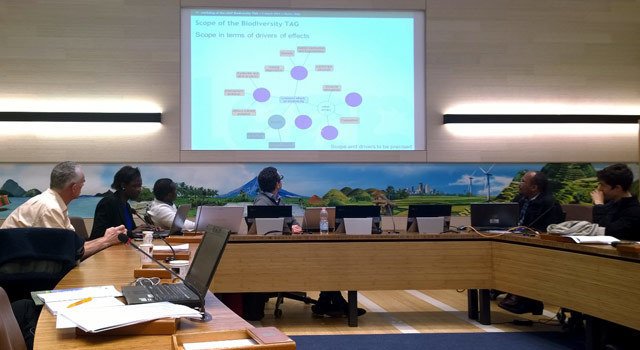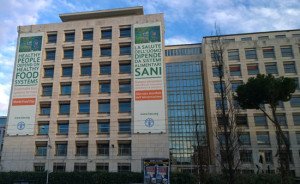The ABMI’s expertise in the assessment of rangeland and grassland biodiversity is drawing international recognition. This past March, ABMI ecologist Dr. Shannon White hit the global stage in Rome, Italy to contribute her knowledge and skills to an urgent question: what are the impacts of livestock production on biodiversity?
Dr. White is the sole North American representative on an expert panel of ten international scientists invited to contribute to a biodiversity working group for the Livestock Environmental Assessment and Performance (LEAP) project. LEAP is hosted by the Food and Agriculture Organization (FAO) of the United Nations, and is a partnership between the private sector, government, and NGOs. White’s involvement in LEAP was facilitated through the Canadian Cattlemen’s Association, which plays an advisory role on the ABMI’s Ecosystem Services Assessment project; White leads the assessment of rangeland ecosystem services on this project.
The overarching goal of LEAP is to provide guidance—with an international perspective—on environmental assessment in the livestock sector. The biodiversity working group has a one-year mandate to prepare a report that includes general principles to assess and benchmark the biodiversity performance of livestock supply chains, and develop a toolbox of specific indicators and methods to measure biodiversity performance in selected case studies.
According to Dr. White, it is important to have a North American presence on a project like this. “Grazing plays a very important role in maintaining and supporting habitat and ecosystem services [the benefits we receive from nature] here; the story is unique globally,” she says. Furthermore, Dr. White strongly believes the cutting-edge biodiversity research performed in North America, such as the work of the ABMI, will be very informative. “Despite being a provincial organization, we cover a huge geographic area and monitor highly varied ecosystems, and thus the ABMI’s work is very relevant globally.”
In Rome, the working group had two days of meetings on biodiversity assessment, which included presentations highlighting both positive and negative effects of livestock on biodiversity from Ireland, Cuba, and Kenya. These presentations illustrated key areas of consideration when assessing livestock impacts on biodiversity: the huge variation in practices and perceptions globally, and the many ways in which biodiversity and livestock can interact. Members of the biodiversity expert group also shared their expertise in life cycle analysis and biodiversity indicators.
Related to this, Dr. White gave the talk, “Biodiversity Indicators: Experience from Alberta Biodiversity Monitoring Institute”. She framed her presentation with knowledge of the global landscape of biodiversity monitoring. “Most regions are not going to have capacity to monitor biodiversity to the extent we do at ABMI,” she explains, “so I focused on strategies the ABMI uses to get the most value out of resources, like extensive remote sensing, great communications, and sophisticated data analysis, which can be transferred to any jurisdiction.”
At the other end of the spectrum of experience, Dr. Fernando R. Funes-Monzote , Vice President of the Latin American Scientific Society of Agroecology, described his work managing a diverse farm operation near Havana, Cuba. On his farm, a variety of agricultural products in addition to livestock, such as honey, sugarcane, vegetables and fruit trees, are all produced in an integrated manner within a small number of hectares. This is contrast to the majority of cow-calf operations in North America, where cattle grazing occurs across extensive tracts of rangeland. His presentation reinforced an issue that the biodiversity working group will need to grapple with, says Dr. White—the issue of scale. A key challenge for the LEAP project will be to understand how livestock affects biodiversity across the vast range of farming systems seen across the world.
With the first LEAP meeting behind her, Dr. White has a fresh perspective on the ABMI. “This experience has reminded me how lucky we are in Alberta to have the ABMI; the commitment to biodiversity monitoring simply is unparalleled,” she explains. With her experience assessing rangeland ecosystem services, understanding links between human footprint and grassland biodiversity, and monitoring rangeland condition, the LEAP project will certainly benefit from Dr. White’s ongoing participation this upcoming year.



